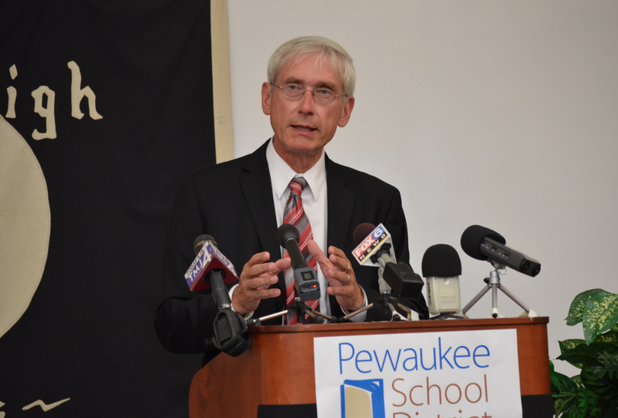
By Christian D’Andrea
MacIver Institute Education Policy Analyst
The biggest factor behind the proposed increases is Evers’s plan to return to a system where the state funds at least two-thirds of a district’s per-pupil costs by 2017. These increases would ensure that every child in Wisconsin would be guaranteed at least $3,000 in state funding every year beginning in 2013-2014.
Under this program, Milwaukee Public Schools would see a state funding increase of just under $37.9 million, or 6.5 percent. The Madison Metropolitan School District would receive an estimated increase of $30 million in state funds – or 30.3 percent more than what they received in 2012-2013. These increases would lessen the local funding burden similarly, providing more aid to districts with less wealth than their neighbors.
“We owe it to taxpayers to bring truth to budgeting,” Evers said. “Fair Funding for Our Future makes Wisconsin’s school funding formula more fair, sustainable, and transparent. It maximizes existing resources and sets the stage for greater state support for education in future years.”
The FFfOF plan would also increase revenue limits at the local level, raising them by $225 next year and $230 in 2014. This, combined with an increased state commitment to funding, would increase per-student funding figures throughout Wisconsin.
The plan also calls for more funding for school choice programs. The Milwaukee Parental Choice Program would receive $59 million more in state aid than it did in 2012-2013. Racine’s voucher program would be given an extra $5.6 million. There are additional considerations in place for directing state funding to independent charter schools as well that fall in line with the proposed increases in regular public schools.
Evers’s plan is to move Wisconsin back to a system where every district is guaranteed to have two-thirds of their funding provided by the state. The program has support from lawmakers on both sides of the aisle, but may still fall victim to some tweaks as the legislative session draws closer. We’ll have continuing coverage of the Fair Funding for Our Future plan as the two-year budget cycle nears.